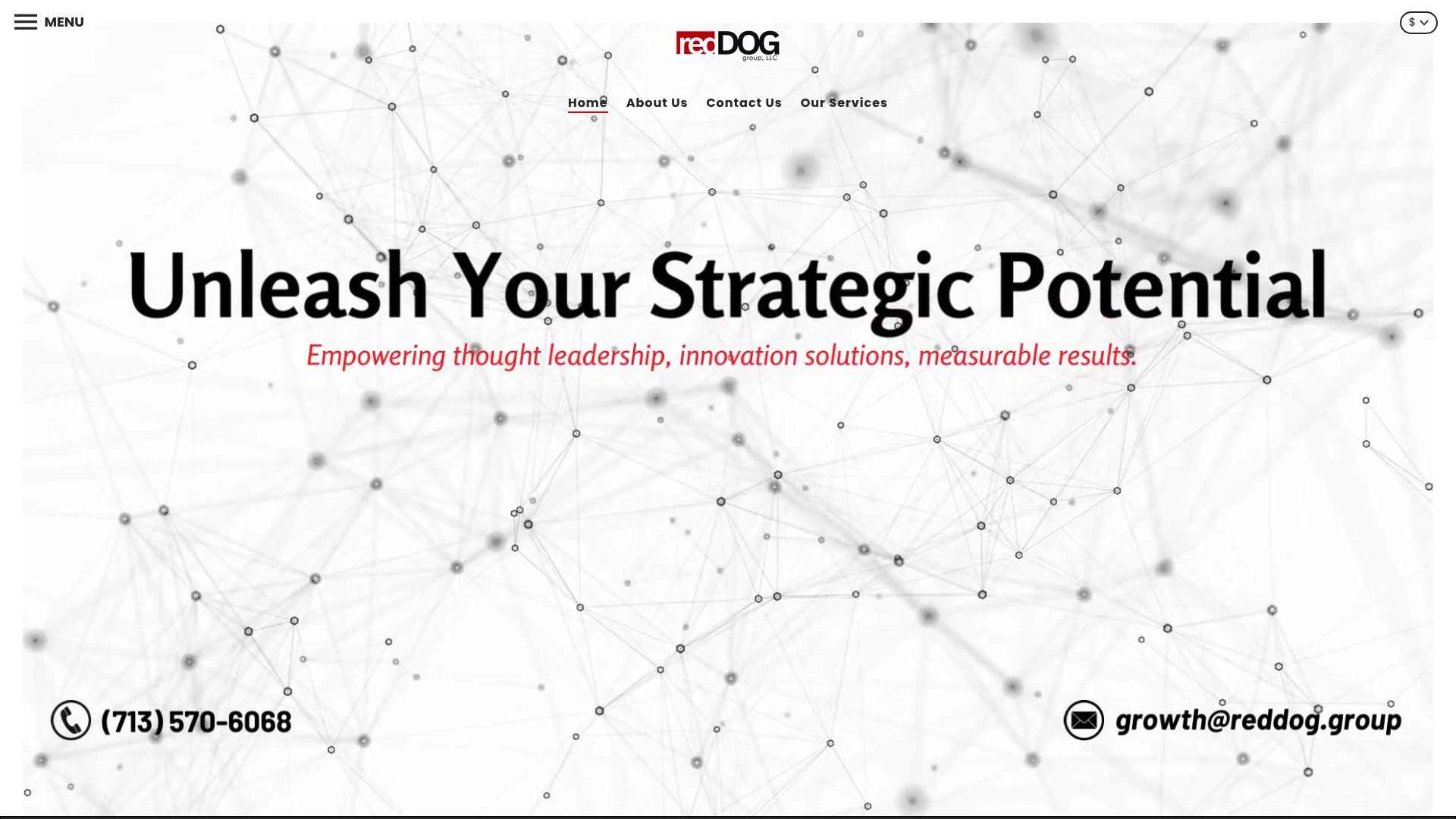
Effective Business Growth Strategies Guide for 2025
Posted on
Figuring out the best way to grow your business can feel like shooting in the dark. Everyone talks about flashy marketing campaigns and daring expansion plans, but companies that use targeted performance measurement systems are statistically far more likely to achieve sustainable long-term growth. The real secret is not about chasing trends, but building a rock-solid foundation with data-driven steps that actually work.
Table of Contents
- Step 1: Analyze Your Current Business Situation
- Step 2: Identify Key Growth Opportunities
- Step 3: Develop A Multi-Channel Sales Strategy
- Step 4: Implement Targeted Marketing Campaigns
- Step 5: Measure Performance And Optimize Efforts
Quick Summary
| Key Point | Explanation |
|---|---|
| 1. Conduct Thorough Internal Assessments | Analyze financial metrics and operational capabilities to establish a clear understanding of your business’s current state. |
| 2. Identify Specific Growth Opportunities | Use findings to develop a list of 5-7 realistic growth strategies that align with your strengths and market needs. |
| 3. Develop a Cohesive Multi-Channel Strategy | Create an integrated sales approach across various platforms to enhance customer engagement and brand consistency. |
| 4. Implement Targeted Marketing Campaigns | Segment your audience and use personalized content to effectively connect with specific customer needs and improve engagement. |
| 5. Establish Continuous Performance Measurement | Implement KPIs and analytics to monitor performance, adapt strategies, and optimize for sustained growth based on data insights. |
Step 1: Analyze Your Current Business Situation
Analyzing your current business situation forms the critical foundation for any successful growth strategy. This initial step provides the strategic clarity needed to map out realistic and targeted growth pathways. Before charging forward with ambitious plans, you need a comprehensive understanding of where your business currently stands.
Begin by conducting a thorough internal assessment that goes beyond surface-level numbers. Financial performance metrics are crucial, but they tell only part of the story. Examine your revenue streams, profit margins, cash flow, and key performance indicators (KPIs) with a critical eye. Look for patterns in your financial data that reveal strengths, weaknesses, and potential opportunities for optimization.
Your assessment should also encompass operational capabilities. Evaluate your current technology infrastructure, team skills, production capacities, and organizational processes. Optimize your small business growth strategy workflow by understanding precisely where your operational efficiency can be enhanced. Are there bottlenecks in your current systems? Do you have the right talent and tools to support your growth ambitions?
External market analysis is equally important. Research your competitive landscape, understand emerging market trends, and identify potential gaps or niches where your business can differentiate itself. Conduct a comprehensive SWOT analysis that breaks down your Strengths, Weaknesses, Opportunities, and Threats. This structured approach will help you develop a nuanced understanding of your business’s current positioning.
![]()
Key verification criteria for completing this step include:
- A detailed financial performance report covering the past 12-24 months
- A comprehensive operational efficiency assessment
- A completed SWOT analysis document
- Clear identification of 3-5 potential growth opportunities
- A preliminary list of required resources or changes to support growth
Remember, this initial analysis is not about perfection but about gaining actionable insights. Be honest in your assessment, acknowledging both your achievements and areas requiring improvement. The goal is to create a realistic, data-driven foundation for your business growth strategy.
Below is a checklist table summarizing key verification criteria for completing each major step in the business growth strategy process.
| Step | Verification Criteria |
|---|---|
| Analyze Current Business Situation | Financial performance report, operational assessment, SWOT analysis, 3-5 growth opportunities, resource/change list |
| Identify Key Growth Opportunities | List of 5-7 opportunities, feasibility assessment, resource estimates, revenue projections, strengths/market alignment |
| Develop Multi-Channel Sales Strategy | Sales roadmap, channel metrics, tech infrastructure plan, customer experience mapping, budget allocation |
| Implement Targeted Marketing Campaigns | Audience segmentation, content/campaign roadmap, marketing tech plan, performance tracking framework, campaign budget |
| Measure Performance and Optimize | KPI framework, analytics tools implemented, quarterly reviews, documented recommendations, accountability mechanisms |
Step 2: Identify Key Growth Opportunities
Identifying key growth opportunities transforms your business strategy from reactive to proactive. This critical step builds directly on your initial analysis, turning insights into actionable pathways for sustainable expansion. Your goal is to uncover realistic and strategic avenues that align with your business strengths and market potential.
Start by examining multiple growth dimensions. Market expansion represents a primary strategy where you can explore new customer segments, geographic territories, or adjacent product lines that complement your existing offerings. Consider both horizontal and vertical growth possibilities. Horizontal growth might involve introducing similar products to new markets, while vertical growth could mean deepening your value chain by adding complementary services or products.
Learn more about growth consulting strategies that can help you systematically evaluate potential opportunities. Innovation becomes your key differentiator here. According to research from McKinsey & Company, companies that systematically invest in innovative approaches significantly outperform their competitors.
Technology and digital transformation offer substantial growth opportunities for businesses willing to adapt. Analyze emerging technologies relevant to your industry. Can you leverage artificial intelligence, automation, or digital platforms to create more efficient processes or introduce new service models? Your digital strategy could unlock previously unexplored revenue streams and operational efficiencies.
Customer-centric growth opportunities demand careful consideration. Conduct deep customer research to understand unmet needs, pain points, and potential service expansions. Sometimes the most lucrative growth opportunities emerge from listening closely to your existing customer base and developing solutions that directly address their evolving requirements.
Key verification criteria for completing this step include:
- A comprehensive list of 5-7 potential growth opportunities
- Preliminary feasibility assessment for each identified opportunity
- Initial resource requirement estimates
- Rough potential revenue impact projections
- Alignment check with your core business strengths and market positioning
Remember that not every opportunity will be viable. The objective is to develop a strategic shortlist of growth pathways that are both ambitious and achievable, setting the stage for detailed strategic planning in subsequent steps.
Here is an options table comparing different types of business growth opportunities mentioned, with examples and relevant considerations.
| Growth Opportunity Type | Example | Key Considerations |
|---|---|---|
| Market Expansion | Entering a new geographic region | Requires market research, possible adaptation of offerings |
| Horizontal Growth | Launching a related product line | Leverages existing brand, competitive analysis needed |
| Vertical Growth | Adding complementary services | Involves investment in new capabilities, strengthens value chain |
| Digital Transformation | Implementing AI-powered processes | Tech readiness, staff training, integration challenges |
| Customer-Centric Growth | Expanding based on customer feedback | Requires deep customer insight, rapid response to needs |
| Innovation-Driven | Adopting automation tools | Ongoing R&D, can provide significant differentiation |
Step 3: Develop a Multi-Channel Sales Strategy
Developing a multi-channel sales strategy transforms your approach from traditional single-channel selling to a comprehensive, interconnected approach that maximizes market reach and customer engagement. This step is about creating a seamless, integrated sales ecosystem that allows customers to interact with your brand across multiple touchpoints.
Learn how to master the omnichannel strategy process to understand the nuanced approach required for successful implementation. Begin by mapping out all potential sales channels relevant to your business. These might include direct-to-consumer platforms, online marketplaces, physical retail locations, social media sales channels, wholesale networks, and emerging digital platforms. Each channel requires a tailored approach that maintains consistent brand messaging while adapting to the specific dynamics of that sales environment.
Technology integration becomes critical in creating a cohesive multi-channel strategy. Invest in robust customer relationship management (CRM) systems and sales tracking tools that provide real-time insights across different platforms. Your goal is to create a unified view of customer interactions, allowing for personalized experiences and data-driven decision making.
Consider implementing technologies that enable inventory synchronization, customer data consolidation, and seamless communication between different sales channels.
Research from McKinsey & Company emphasizes that consistency is paramount in multi-channel strategies. Develop standardized processes for pricing, customer support, product information, and brand messaging that remain uniform across all channels. This approach builds customer trust and creates a professional, reliable brand perception.
Customer experience should be your primary consideration when designing your multi-channel strategy. Each sales channel must offer a smooth, intuitive purchasing journey that feels like a natural extension of your brand. This might involve creating channel-specific marketing materials, adapting product presentations, and ensuring seamless transitions between online and offline experiences.
Key verification criteria for completing this step include:
- A comprehensive multi-channel sales roadmap
- Defined performance metrics for each sales channel
- Technology infrastructure assessment and implementation plan
- Initial customer experience mapping document
- Budget allocation for channel development and marketing
Remember that a successful multi-channel strategy is not about being everywhere simultaneously, but about being strategic, consistent, and customer-focused in your approach.
Step 4: Implement Targeted Marketing Campaigns
Implementing targeted marketing campaigns transforms your growth strategy from theoretical planning to real-world execution. This step focuses on creating precise, data-driven marketing efforts that directly connect with your identified growth opportunities and target customer segments. Precision and personalization become your primary strategic tools.
Understand the strategic role of digital marketing agencies in crafting sophisticated campaign approaches. Begin by segmenting your audience with extreme granularity. Move beyond basic demographic information and develop comprehensive customer personas that capture behavioral patterns, purchasing motivations, and potential pain points. Your marketing campaigns must speak directly to specific customer needs, creating a sense of personalized communication.
Research from McKinsey & Company indicates that highly targeted marketing approaches can significantly improve customer engagement and conversion rates. Leverage advanced digital marketing tools that enable sophisticated targeting capabilities. Platforms like Google Ads, Facebook Business Manager, and LinkedIn Marketing Solutions offer robust audience segmentation features that allow you to create laser-focused campaign strategies.
Content strategy plays a crucial role in your targeted marketing approach. Develop a diverse content ecosystem that includes educational blog posts, engaging social media content, compelling video narratives, and interactive digital experiences. Each piece of content should be strategically designed to address specific customer segments, moving them through your sales funnel with carefully crafted messaging that resonates with their unique challenges and aspirations.
Technology integration becomes paramount in executing sophisticated marketing campaigns. Implement marketing automation tools that enable personalized communication workflows, track customer interactions across multiple touchpoints, and provide real-time performance analytics. These technologies allow you to create dynamic, responsive marketing strategies that adapt quickly to changing customer behaviors and market dynamics.
Key verification criteria for completing this step include:
- Comprehensive audience segmentation document
- Detailed content and campaign strategy roadmap
- Marketing technology and automation implementation plan
- Initial campaign performance tracking framework
- Budget allocation for campaign execution and optimization
Remember that successful targeted marketing is an iterative process. Be prepared to continuously refine your approach based on real-world performance data and emerging customer insights.

Step 5: Measure Performance and Optimize Efforts
Measuring performance and optimizing efforts represents the critical feedback loop that transforms your growth strategy from a static plan into a dynamic, responsive system. This step is about creating a continuous improvement mechanism that allows your business to learn, adapt, and refine its approach based on real-world data and insights.
Explore our comprehensive guide to understanding growth consulting to gain deeper insights into performance measurement strategies. Begin by establishing a robust key performance indicator (KPI) framework that goes beyond traditional financial metrics. While revenue and profit remain important, focus on developing a holistic set of metrics that capture the full spectrum of business performance. These might include customer acquisition cost, customer lifetime value, conversion rates, engagement metrics, and operational efficiency indicators.
According to research from McKinsey & Company, businesses that implement comprehensive performance measurement systems are significantly more likely to achieve sustainable long-term growth. Invest in advanced analytics tools that provide real-time, actionable insights. Platforms like Google Analytics, Tableau, and specialized business intelligence software can help you create comprehensive dashboards that track performance across multiple dimensions.
Data interpretation requires a nuanced approach. Don’t simply collect numbers; develop a systematic process for analyzing performance data. Look for patterns, correlations, and unexpected insights that might not be immediately apparent. Create regular review cycles where your leadership team critically examines performance metrics, discussing not just the numbers but the underlying trends and potential strategic implications.
Optimization is an ongoing process that requires both strategic thinking and tactical agility. When you identify underperforming areas, develop targeted intervention strategies. This might involve reallocating resources, adjusting marketing approaches, refining product offerings, or investing in additional training and development. The key is to remain flexible and responsive, treating your growth strategy as a living document that evolves with your business.
Key verification criteria for completing this step include:
- Comprehensive KPI framework document
- Performance tracking and analytics tool implementation
- Quarterly performance review process
- Documented optimization recommendations
- Clear accountability mechanisms for performance improvement
Remember that effective performance measurement is not about perfection but about continuous learning and incremental improvement. Embrace a culture of data-driven decision making that values transparency, critical thinking, and adaptive strategy.
Ready to Transform Your Business Growth in 2025?
Every business leader wants more growth, but not everyone has a clear roadmap. The guide above explained how thorough analysis, targeted opportunity identification, and multi-channel strategies are your keys to real change. Yet, turning these concepts into consistent profit is often where most businesses get stuck. Do you struggle to unify your online and offline sales or feel overwhelmed by fast-changing digital trends? Are you missing the expertise to optimize multiple channels, maximize your DTC performance, or master marketplace selling?
Get expert help from Digital & Business Consulting Services by Reddog Consulting. Reddog Group specializes in the same growth strategies outlined in this article. We combine data-driven insights, omnichannel mastery, and a proven track record of expanding brand reach for over 50 brands. Let us help you bring your 2025 goals to life with advanced solutions for marketplace management, digital marketing, and lasting revenue growth.

Turn your strategy into measurable business success. Explore how our experienced team can deliver customized growth results for your brand. Visit https://reddog.group or check our service offerings now. Claim your spot for a strategy consultation and unlock the next level of growth before your competitors do.
Frequently Asked Questions
What is the first step in developing an effective business growth strategy?
Analyzing your current business situation is the initial step. It involves conducting a thorough internal assessment of financial performance, operational capabilities, and external market analysis to create a data-driven foundation for growth.
How can I identify key growth opportunities for my business?
Identifying growth opportunities involves examining market expansion strategies, evaluating customer-centric needs, and exploring innovations that align with your business strengths and market potential.
What components should be included in a multi-channel sales strategy?
A multi-channel sales strategy should include mapping all potential sales channels, investing in integrated technology, ensuring consistent branding across channels, and prioritizing customer experience to create a seamless purchasing journey.
How do I measure performance and optimize my growth efforts?
Measuring performance requires establishing a robust KPI framework that captures various metrics beyond revenue, coupled with advanced analytics tools. Regular reviews and strategic adjustments based on data insights facilitate ongoing optimization and improvement.
Recommended
Contact
1500 Hadley St. #211
Houston, Texas 77001
growth@reddog.group
(713) 570-6068
Marketplaces
Amazon
Walmart
Target
NewEgg
Shopify

Leave a comment: